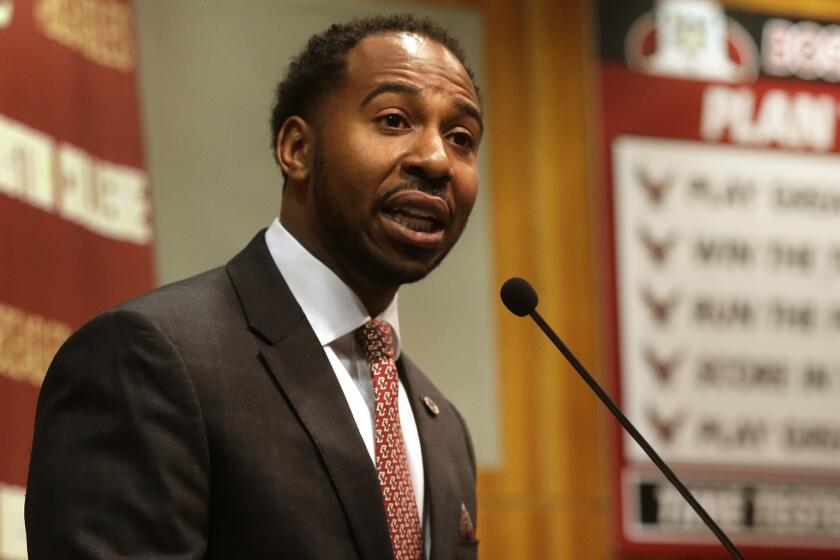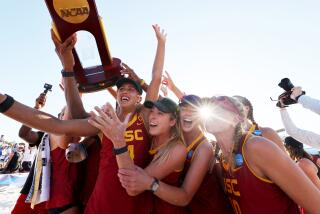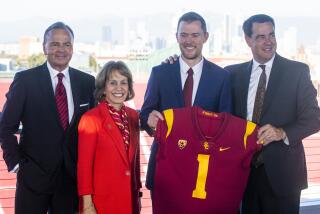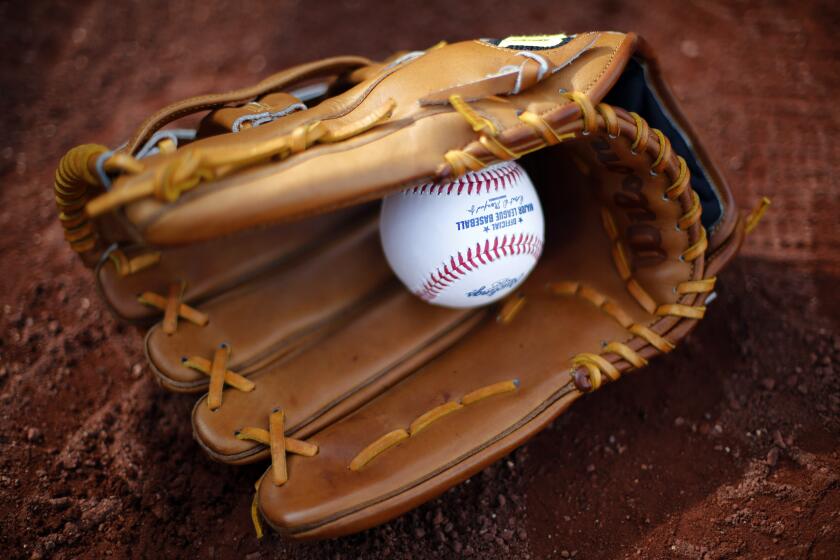Pac-12’s Larry Scott says student-athletes would be safer on campus than at home
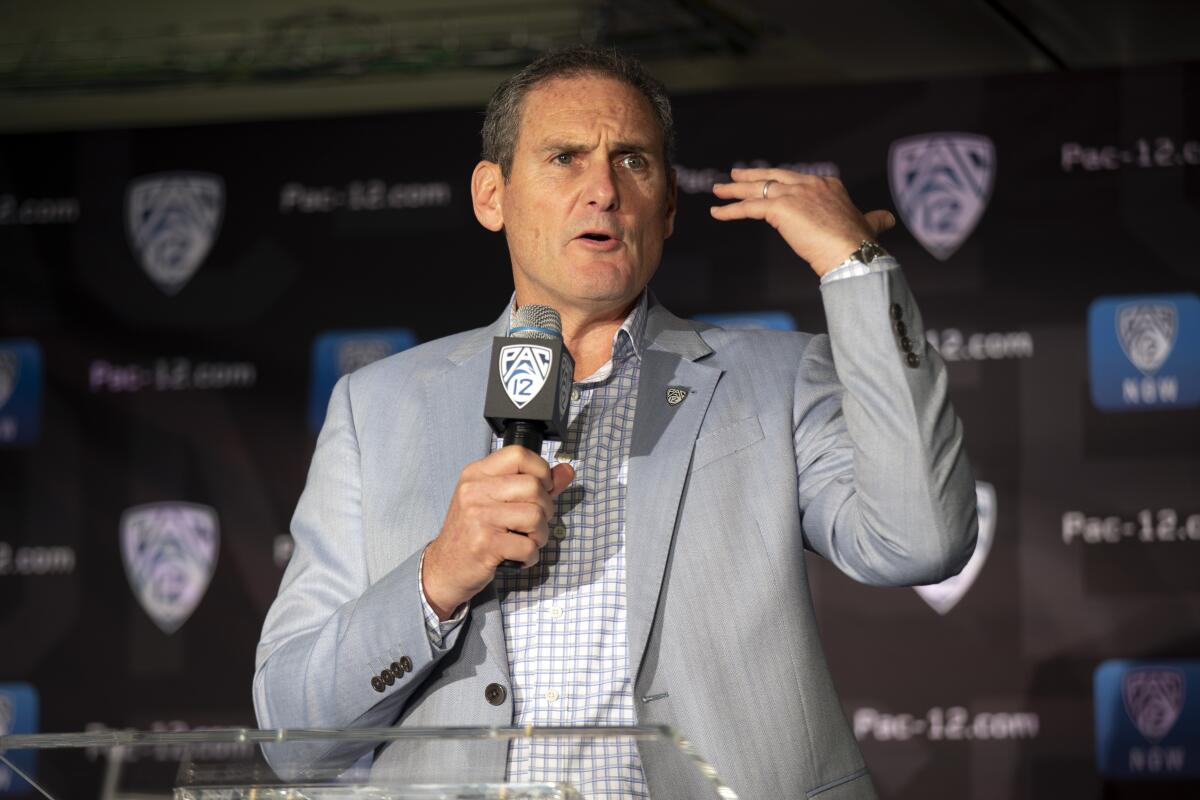
- Share via
As the NCAA opened the door for athletes to return in June for voluntary workouts, the Pac-12’s commissioner made clear ahead of the conference’s own vote next week that he believes student-athletes would be “in a safer and healthier position” if they were back on their respective campuses this summer, rather than at home.
In a CNN interview Friday, Larry Scott joined other power brokers across college football in framing a June return to campus as a measure meant to keep athletes safe and healthy amid the COVID-19 pandemic.
A June return, Scott noted, would put the Pac-12 on schedule to potentially start training camp as early as late July, with “a nice glide-path to support the start of the college football season at the end of August.”
UCLA is set to open its season Aug. 29 at home against New Mexico State.
USC is scheduled to open on Sept. 5 against Alabama in Arlington, Texas. USC athletic director Mike Bohn said Thursday that he believes “the odds are in our favor” to play the game as scheduled, with the Pac-12 and its surrounding region opening up more quickly than many might’ve assumed.
USC has its 13th commitment for the 2021 class as Mission Hills Bishop Alemany three-star offensive tackle Saia Mapakaitolo said Friday he would play for the Trojans.
“We’ve got three states in our conference where gyms are already open and student-athletes are wanting to get back,” Scott told CNN, “and in most cases, we feel that student-athletes will be in a safer position and a healthier position if they can have access to the world-class medical care, supervision, and support that they can get on their campuses, and if there are issues with the virus, to have access to these world-class medical centers that we have. But these are baby steps, bringing safely student-athletes back to campus.”
The first step was initiated Wednesday,, when the NCAA Division I Council announced that it would allow voluntary on-campus workouts to begin June 1 for football and men’s and women’s basketball. On Friday, the council expanded that directive to include all Division I sports.
University presidents from the Southeastern Conference voted shortly after to approve a return June 8. Other schools, including Ohio State and Iowa, have announced they’ll return June 1, as soon as they’re allowed by the NCAA. The Pac-12 is also expected next week to approve a return sometime in June.
In a Zoom interview with West Coast Sports Associates on Thursday night, Bohn offered his own recommendation for a return on either June 8 or June 15. He joined Scott and the growing chorus of administrators suggesting “a student-athlete is safer in an intercollegiate athletics enterprise’s offices, training rooms, than they are anywhere else.”
New UCLA athletic director Martin Jarmond comes in with a sizzle, but it will all fizzle out if he can’t help Chip Kelly make the football program a winner.
“I’m convinced of that,” Bohn said. “I think we can monitor that and do a great job of keeping them safe.”
But questions remain in regards to how schools will actually monitor and keep their athletes safe, when they do return. The NCAA has not publishedsafety standards as it pertains to COVID-19, instead leaving conferences and schools to decide for themselves.
That could create a wide swath of inconsistent policies governing testing, which experts agree is the most crucial tenet of any plan to return. In announcing its plans for a return to voluntary workouts on Friday, the SEC and several of its member schools explained that players and staff members will be initially tested for COVID-19 only upon their return to campus. Beyond that, they will be tested only if they’re symptomatic.
Testing protocols for the Pac-12 and USC are still being determined, Bohn said.
“We’re going to have to figure out how often do we want to test,” he said. “But more importantly, we want to monitor groups of student-athletes — where they eat, where they work out, where they lift weights, where they live, dorm rooms, number of student-athletes per restroom, all those different pieces of the protocols. It’s extensive.”
More to Read
Go beyond the scoreboard
Get the latest on L.A.'s teams in the daily Sports Report newsletter.
You may occasionally receive promotional content from the Los Angeles Times.

